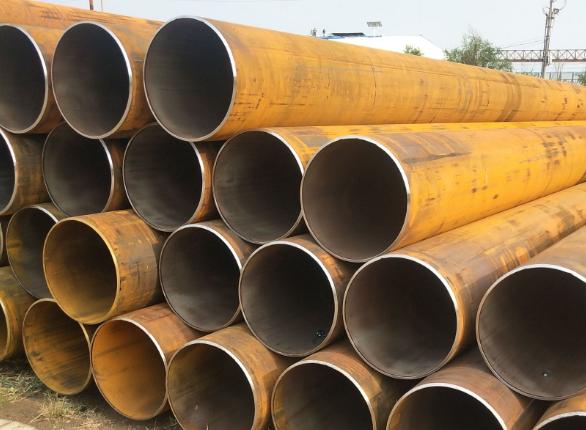
What is Carbon Steel Tube?
Carbon steel tubes are made of steel castings or solid round steel through holes to make capillaries, and then made by hot rolling, cold rolling or cold drawing. Carbon steel tubes have an important position in China's seamless steel tube industry. The key materials are mainly q235, 20#, 35#, 45#, and 16mn. The most important product implementation standards include national standards, American standards, Japanese standards, etc., among which the national standards include the Ministry of Chemical Industry standards, Sinopec pipe fitting standards, and power engineering pipe fitting standards. Let's take a look at the advantages of carbon steel tubes.
Advantages of carbon steel tubes:
Carbon steel tubing provides safety and durability. It is an ideal material for structural applications due to its impact resistance and its imperceptibility to harsh environmental conditions such as stress or extreme weather.
The incredible strength of carbon steel means that carbon steel tubes can be made thinner and use less material while still being able to transport large volumes. This makes carbon steel tubing a cost-effective material. Not only can the use be reduced, but the carbon steel can also be recycled, which is environmentally friendly and economical.
Carbon steel tube is a versatile material due to its ease of fabrication. We can produce products in various thicknesses and sizes. It's also easy to cut and bend to fit wherever needed. It also connects easily to fittings, valves and other plumbing fittings.

Classification and grades of carbon steel:
Low carbon steel (also known as Mild steel):
The carbon content is usually between 0.02% and 0.25%. Low carbon steel has good ductility and toughness, can be processed hot and cold, and is easy to weld. Commonly used low carbon steel grades include #20 Steel, Q235, ASTM A53/A106, ASTM A36, AISI 1020, S235 and C22E.
Medium carbon steel:
The carbon content is usually between 0.25% and 0.60%. Medium carbon steel has high strength and hardness, but low ductility and toughness. Commonly used medium carbon steel grades include #45 steel, AISI 1045, C45E and so on.
High Carbon Steel:
The carbon content is usually between 0.60% and 2.11%. High carbon steel has high strength and hardness, but low ductility and toughness, and poor weldability. Commonly used high carbon steel grades include #65 steel, 65Mn, AISI 1065, T8/ T8A, T10/ T10A, AISI W1/W2, C60E, C80U, etc.
Types of carbon steel tubes:
Carbon steel tubes can be divided into seamless tubes and welded tubes (straight seam welded steel tubes, spiral welded steel tubes, electric resistance welded steel tubes) according to the production method. Seamless steel tubes are made by hot rolling or cold drawing, and have high strength and tightness. Welded steel tube is made by rolling steel plate or steel strip into a cylindrical shape, and then connecting the weld seams by resistance welding, submerged arc welding and other methods.
Carbon steel seamless tubes are divided into two types: hot-rolled (extruded) seamless steel tubes and cold-drawn (rolled) seamless steel tubes due to their different manufacturing processes. Cold drawn (rolled) tubes are divided into two types: round tubes and special-shaped tubes.
1) Hot rolled (extruded) seamless steel tube : round tube billet → heating → piercing → three-roll cross rolling, continuous rolling or extrusion → stripping → sizing (or reducing) → cooling → straightening → hydraulic test (or Flaw detection) → marking → storage
2) Cold drawn (rolled) seamless steel tube: round tube blank→heating→piercing→heading→annealing→pickling→oiling (copper plating)→multi-pass cold drawing (cold rolling)→blank tube→heat treatment→straightening →hydrostatic test (flaw detection)→marking→storage
Use of carbon steel tube:
Steel pipes can be divided into carbon pipes, alloy pipes, stainless steel pipes, etc. according to the pipe material (ie steel type). Carbon pipes can be further divided into ordinary carbon steel pipes and high-quality carbon structural pipes. Alloy tubes can be further divided into: low alloy tubes, alloy structural tubes, high alloy tubes, and high strength tubes. Bearing tubes, heat- and acid-resistant stainless tubes, precision alloy (such as Kovar) tubes, and superalloy tubes, etc. Stainless steel pipes are divided into five types according to their organizational structure, namely ferritic stainless steel, austenitic stainless steel, martensitic stainless steel, duplex stainless steel and precipitation hardening stainless steel.
Read more: Carbon Steel Pipe & Tube Sizes or Schedule 80 Carbon Steel Pipe
Related information
